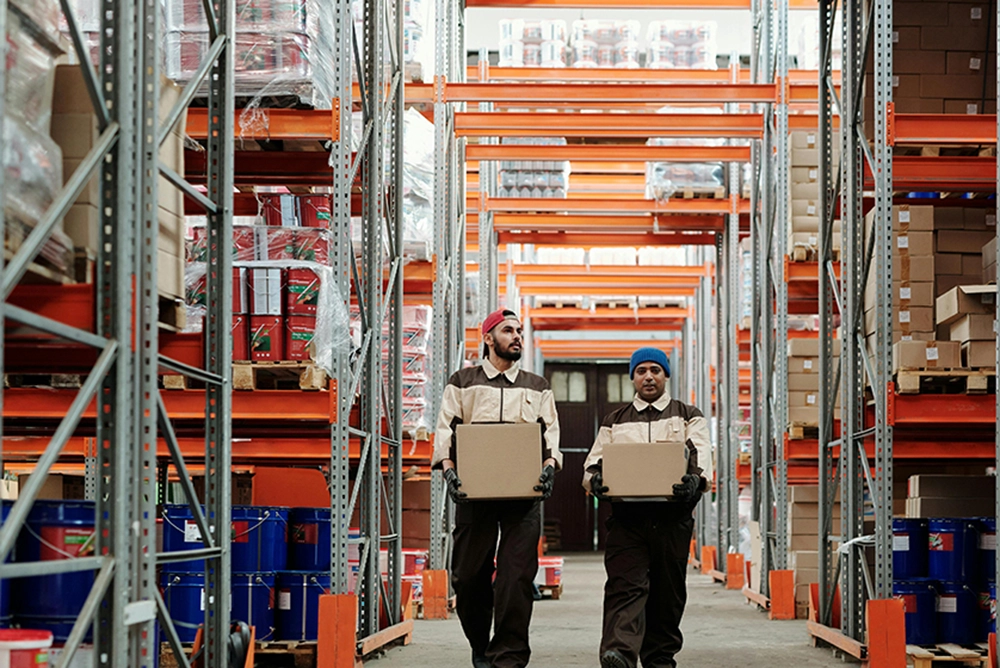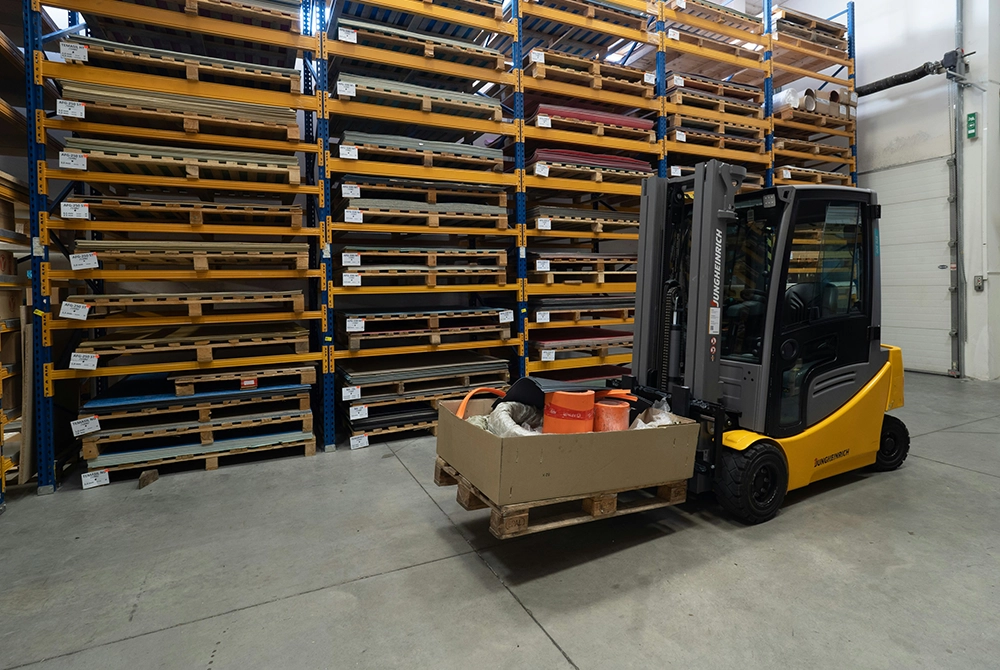The warehousing and logistics industry is changing rapidly. There is growing pressure to deliver faster amid labor shortages and supply chain volatility. To combat this, warehouses are adapting using these 2025 trends.
Trend #1: Automation & Robotics Go Mainstream
Warehouses are increasingly investing in automation to boost efficiency and accuracy. Use of autonomous mobile robots (AMRs), robotic arms, conveyor systems and AI powered picking and packing systems is expanding rapidly.
Major warehouses like Amazon have been heavily investing in robotics for over a decade and reported up to a 25% reduction in fulfillment costs.
Increased use of automation and robotics can be used for palletizing, inventory counts and packaging.
However, these automations are not replacing warehouse temp staffing. Automation means fewer repetitive tasks for human labor, which results in better use of flexible staff.
Trend #2: AI & Data-Driven Operations
Artificial intelligence is a growing trend in just about every industry and warehousing is no different. Ai and machine learning are reshaping operations from real-time demand forecasting to predictive maintenance. These predictive analytics are utilized for both staffing and inventory.
Ai-driven warehouse management systems now track inventory accurately, reduce errors and generate smarter shift schedules. This results in smarter forecasting, better shift planning, fewer stockouts.
Pairing data-driven operations with warehouse job apps creates a cost effective strategy to staff for any situation.
The global warehouse automation market has a 45.6% annual growth rate and is expected to reach $63 billion by 2030.
Online staffing platforms like Bacon use performance data to match the right temp worker with the right shift.
Trend #3: Sustainability and Green Warehousing
Environmental consciousness is rising worldwide. The entire industry is seeing a shift to green-certified facilities and sustainable packaging. In India, green-certified warehouse space is projected to quadruple by 2030.
In the U.S. there is rising interest in energy-efficient layouts, solar integration and ESG compliance. Energy efficient facilities, solar panels and sustainable materials are becoming competitive advantages in logistics.
Sustainable operations also demand flexible ways to find temporary warehouse workers that avoid excess head count.
Trend #4: On-Demand Warehousing Models
The “ride-share” model is being applied to warehousing. Businesses are now renting warehouse space and services on-demand. This has resulted in the growth of short-term flexible warehousing leases, especially for e-commerce.
On-demand warehousing means faster adaptation to seasonality, market entry, and demand spikes.
Temporary labor and staffing apps to find warehouse staff are crucial to support this plug and play warehouse model.
With staffing apps warehouses don’t need to rely on temp agencies near them. Warehouses simply post the shifts then need and outline the job they need filled. They can find pickers and packers, forklift drivers, and find warehouse workers for general tasks.
After a shift is posted workers choose to pick up warehouse shifts, resulting in a high fill and show rate. The best gig apps of 2025 include BaconWork.
With this model warehouses only pay for what they use, which cuts fixed costs and enables agile fulfillment.
Trend #5: Hyperlocal & Omnichannel Fulfillment
Demand for near instant delivery is driving warehousing closer to end customers. The trend toward urban micro-fulfillment centers aim to enable 1 day or same day delivery.
Omnichannel warehouses now handle e-comm, B2B, returns and more all under one roof. Warehouses are also integrating inventory and delivery channels for smooth omnichannel experiences.
This change creates labor complexity and a demand for adaptable workers who can shift roles. Instead of hiring picking and packing workers, full time businesses are using flexible temp labor to scale up or down without losing efficiency.
Stay Ahead with Smarter Staffing
Amongst these trends we see a shift towards automation and AI. This doesn't mean the need for human workers is getting replaced.
Automation doesn't eliminate jobs, it changes them. Skilled and flexible temp workers are needed to fill gaps. Ai is most effective when staffing is also agile.
The most future ready warehouses are pairing technology with on-demand labor. To stay competitive and at the top audit your warehouse operations and consider if your warehouse is fast, flexible and performance driven enough.







